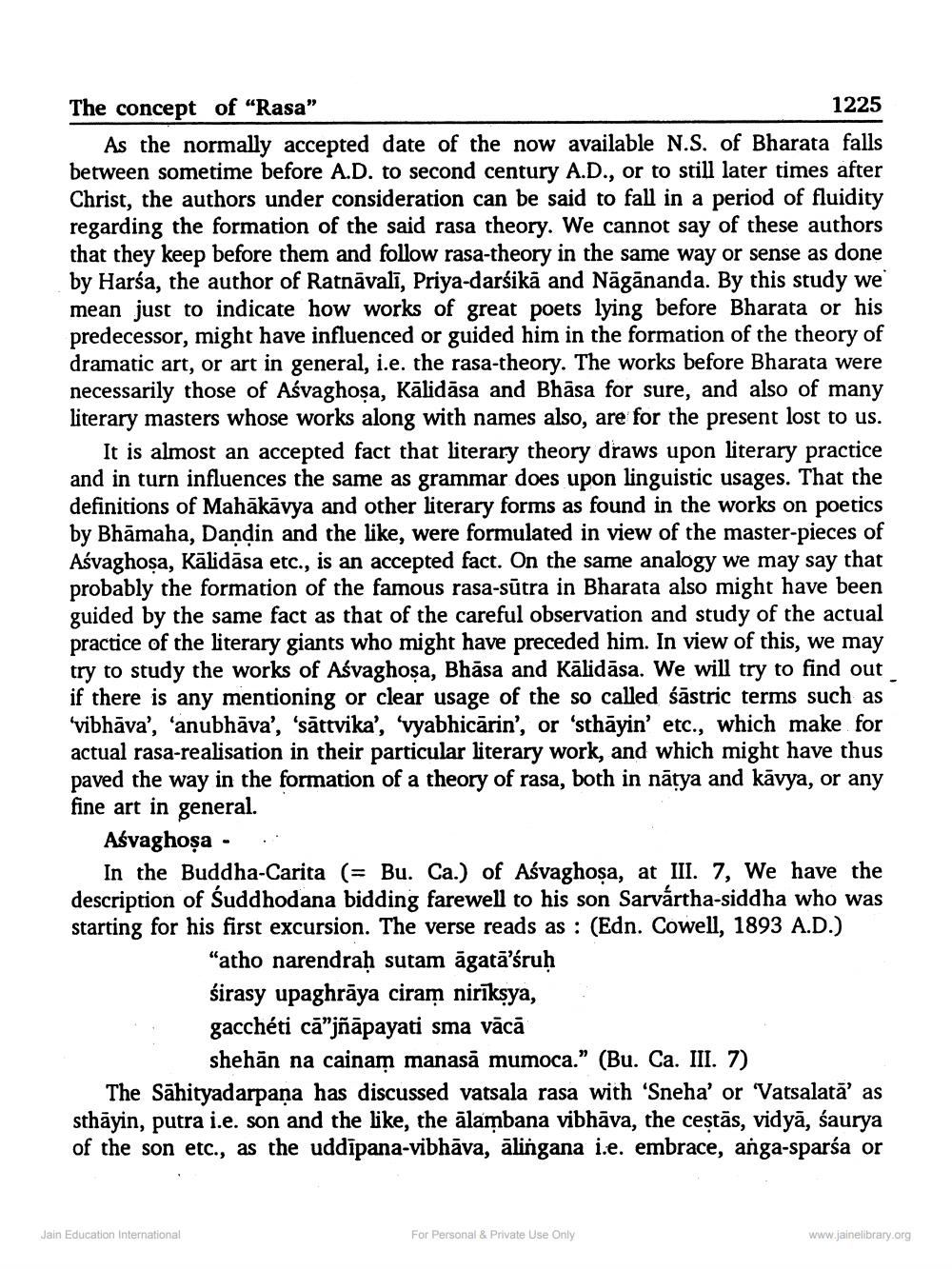________________
The concept of “Rasa”
1225 As the normally accepted date of the now available N.S. of Bharata falls between sometime before A.D. to second century A.D., or to still later times after Christ, the authors under consideration can be said to fall in a period of fluidity regarding the formation of the said rasa theory. We cannot say of these authors that they keep before them and follow rasa-theory in the same way or sense as done by Harśa, the author of Ratnāvalī, Priya-darśikā and Nāgānanda. By this study we mean just to indicate how works of great poets lying before Bharata or his predecessor, might have influenced or guided him in the formation of the theory of dramatic art, or art in general, i.e. the rasa-theory. The works before Bharata were necessarily those of Aśvaghosa, Kālidāsa and Bhāsa for sure, and also of many literary masters whose works along with names also, are for the present lost to us.
It is almost an accepted fact that literary theory draws upon literary practice and in turn influences the same as grammar does upon linguistic usages. That the definitions of Mahākavya and other literary forms as found in the works on poetics by Bhāmaha, Dandin and the like, were formulated in view of the master-pieces of Aśvaghosa, Kālidāsa etc., is an accepted fact. On the same analogy we may say that probably the formation of the famous rasa-sūtra in Bharata also might have been
y the same fact as that of the careful observation and study of the actual practice of the literary giants who might have preceded him. In view of this, we may try to study the works of Ašvaghoșa, Bhāsa and Kālidāsa. We will try to find out if there is any mentioning or clear usage of the so called śāstric terms such as 'vibhāva', 'anubhāva', 'sättvika', 'vyabhicărin', or 'sthāyin' etc., which make for actual rasa-realisation in their particular literary work, and which might have thus paved the way in the formation of a theory of rasa, both in nātya and kāvya, or any fine art in general.
Ašvaghosa - .'
In the Buddha-Carita (= Bu. Ca.) of Asvaghosa, at III. 7, We have the description of Suddhodana bidding farewell to his son Sarvártha-siddha who was starting for his first excursion. The verse reads as : (Edn. Cowell, 1893 A.D.)
"atho narendraḥ sutam agatā’śruḥ śirasy upaghrāya ciram nirīksya, gacchéti cā"jñāpayati sma vācā
shehān na cainam manasā mumoca." (Bu. Ca. III. 7) The Sahityadarpana has discussed vatsala rasa with 'Sneha' or 'Vatsalatā' as sthāyin, putra i.e. son and the like, the ālambana vibhāva, the ceștās, vidyā, śaurya of the son etc., as the uddipana-vibhāva, alingana i.e. embrace, anga-sparsa or
Jain Education International
For Personal & Private Use Only
www.jainelibrary.org




